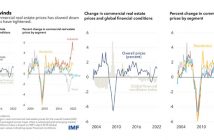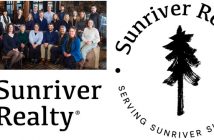(Photo above | Cascade Business News)
Peter Economy, The Leadership Guy, wrote for Inc. magazine, “You’re not alone in thinking that most meetings are a waste of time. In a survey of businesses conducted a few years ago, Microsoft found that people spend 5.6 hours each week in meetings; 71 percent of American employees reported that these meetings ‘aren’t very productive.’”
These are Peter’s five steps to great meetings:
1. Consider your desired outcome.
Before you reserve a room and send out invitations, take a few moments to consider why you want to call your meeting in the first place. Who should be present? What outcomes do you expect as a result of the meeting? What impact do you hope to have? As with any tool, meetings yield desirable results only when their limitations are taken into consideration.
A timely email, picking up the phone or a quick visit to someone in the lab might get you what you want much more quickly and efficiently than organizing a meeting. When mismanaged or poorly run, meetings can be counterproductive, distracting, and a waste of time and money.
2. Create an agenda.
Once you clearly understand the reasons for your meeting and your intended outcomes, create an agenda. Clear agendas drive successful meetings. The agenda not only tells people what to expect, it outlines topics of discussion, sets the context and scope, lists key issues, and states desired objectives.
When sent out before the meeting, an agenda permits you and others to prepare. Avoid wasting valuable meeting time — distribute information beforehand. If appropriate, ask for input and have your most current agenda visible during the meeting. It helps keep the meeting focused and references the most current information.
3. Identify and invite key participants.
Identify key people you need in the meeting. Include anyone you believe will help you get the information and results you need- no more and no less. This list is easier to compose once you have an agenda completed. Avoid excluding knowledgeable people based on politics. Include any people, groups, or departments that you’re certain will be affected by your meeting. Have a plan for distributing your results to those who were present — and also to anyone invited but unable to attend.
4. Present the issues and stay focused on the goal.
Begin and end your meeting on time. Make sure you have any tools, data and reports you need readily available before your meeting starts and put it in the meeting space in advance. Don’t waste meeting time hooking up equipment, checking connections, or looking for files on your laptop if these tasks can be completed earlier.
People will appreciate your efforts to conduct an efficient meeting that ends on time or earlier than scheduled. Once you start, set a good example by speaking clearly, respectfully, and constructively. Encourage all meeting participants to contribute to the meeting — if someone isn’t actively participating, the
meeting is probably a waste of time for them. Move your meeting along by sticking to your agenda. If discussion goes off topic, or becomes personal and unconstructive, refocus.
Identify topics for escalation and possible off-line discussions for a later time. Animated or heated discussion during meetings can be constructive and quite productive as long as it does not become personal and off-topic.
5. Wrap-up the meeting.
Once the agenda has been covered, or your allotted time is up, wrap up the meeting. Avoid the urge to continue by addressing any new issues that may come up. The wrap-up officially closes the meeting. It confirms, clarifies and recaps what was discussed — and everyone’s understanding of the situation or goals.
Confirm whether or not your meeting has fulfilled your objectives. If it turns out that your meeting has left you with additional questions, identify any new topics, suggest further action, escalate your concerns, or reschedule follow-up meetings as needed. After the meeting, distribute notes and minutes to those on your distribution lists in a timely fashion. As a final thought, solicit feedback from others.





